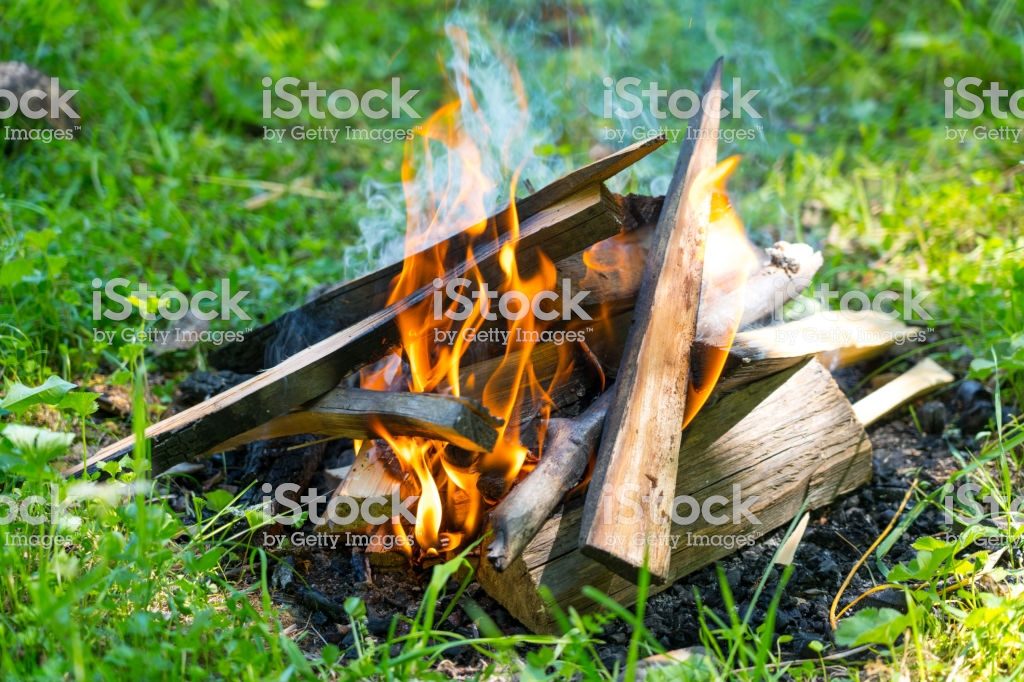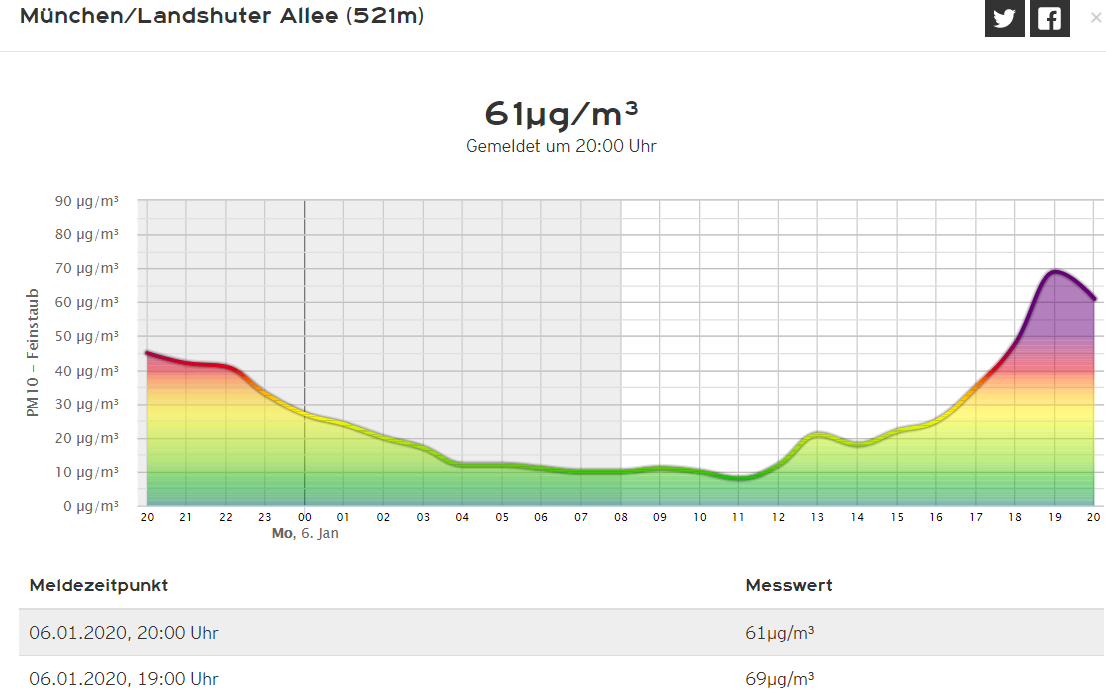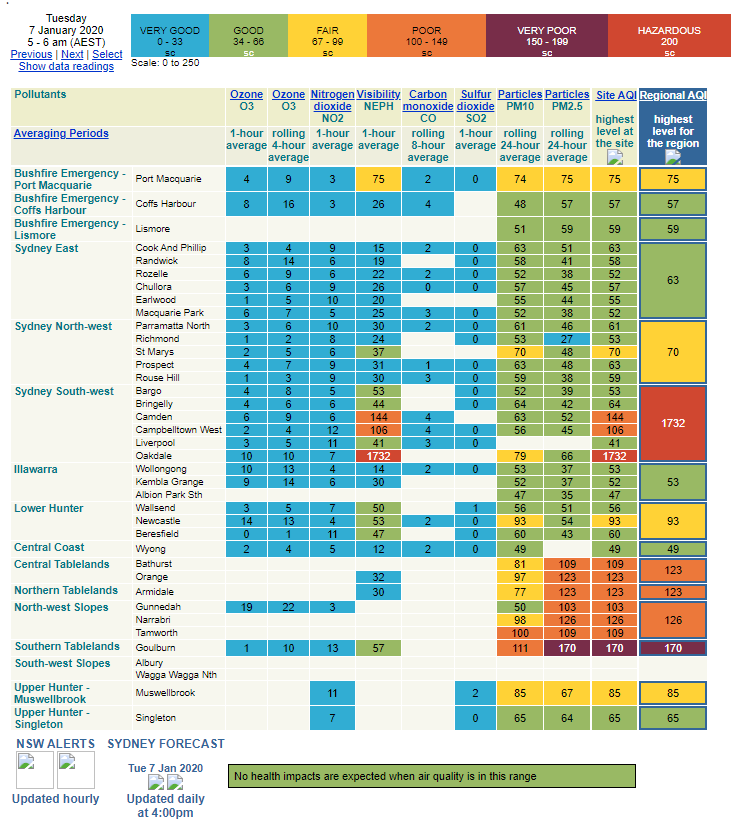Moreover, many German cities are moving to ban diesel engine cars because of the CO2 they produce and, more importantly, all the terrible fine particles they emit.
Yet, ironically, as cities move to "clean" up their act and protect the climate, the opposite is in fact becoming the result. German cities are increasingly choking on fine particles emitted by dirty wood-burning - and activists are turning a blind eye to the growing problem.
In the case of Munich, Swiss meteorologist Jörg Kachelmann recently pointed out that evening time air quality in the Bavarian capital becomes worse than the average air quality of much of New South Wales, Australia even as bush fires rage.
Kachelmann tweeted:
All air measurement stations in the fire-affected New South Wales currently have better air quality than the wood-fired Munich.What follows is the chart for Munich, yesterday evening (January 6), up to 8 pm for fine particles:
https://dpie.nsw.gov.au/air-quality/air-quality-concentration-data-updated-hourly...
Munich (as always: clean in the daytime, filthy evenings/nights):
https://kachelmannwetter.com/de/luftqualitaet/bayern/pm10-feinstaub/20200106-1900z.html#obs-detail-DEBY115...
No journalist is interested."
Yesterday evening (Munich - time) most stations in NSW showed an average cleaner air than Munich did. Evenings many of Munich's citizens like to settled down and light cozy fires to sit by - and feel good about their contribution to CO2 cutbacks.
The chart above shows how Munich's air had become laden with 70 micro grams of fine particles by 7 p.m. - worse than the average air quality in NSW!
New South Wales air quality, Tuesday, January 7, 2020:






Reader Comments